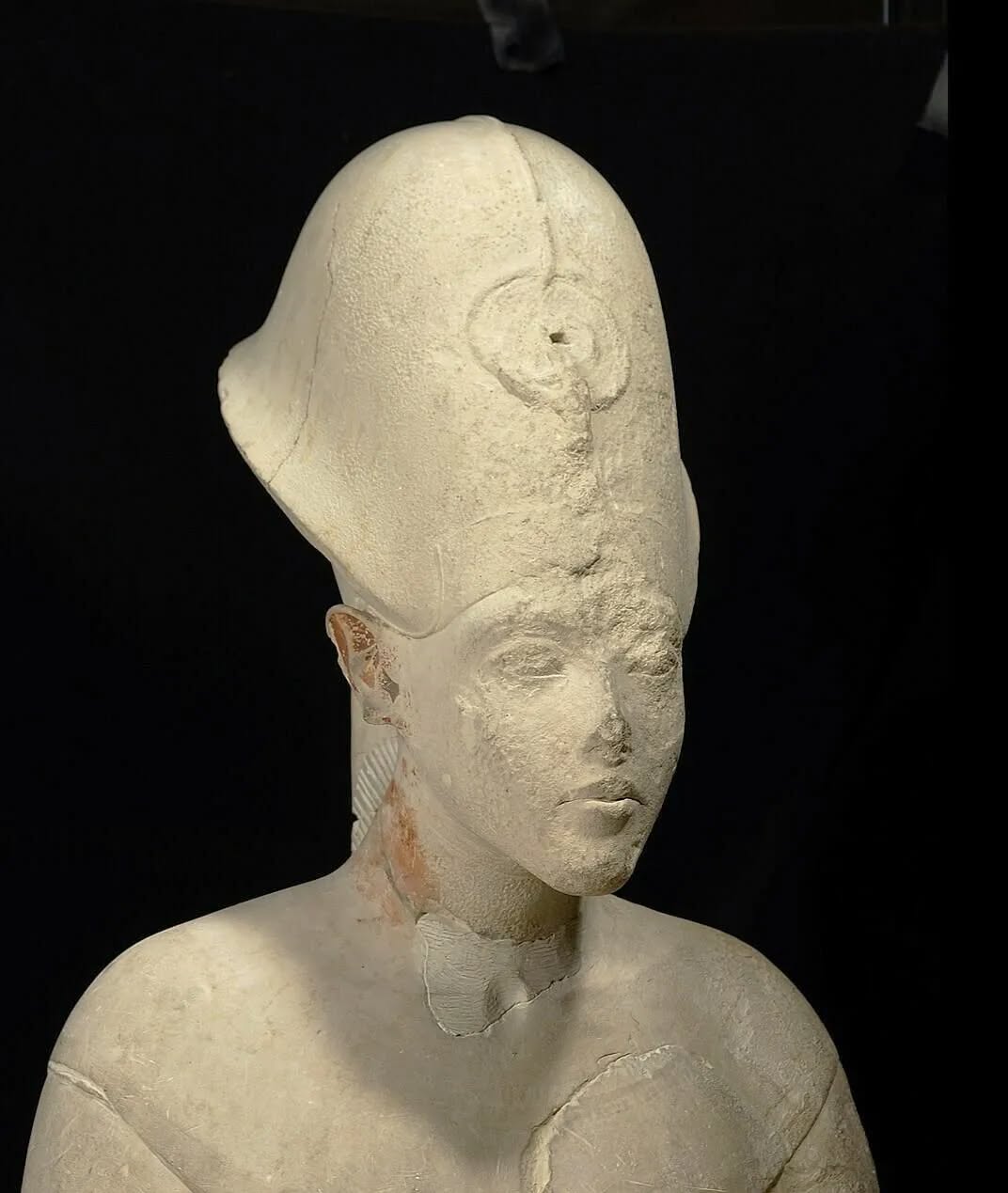A Pharaoh’s Face That Changed Egypt Forever
In a time when the faces of kings were carved to embody timeless power and idealized beauty, one man dared to defy it all. Around 1352–1335 B.C., during the height of Egypt’s 18th Dynasty, artisans at Tel el-Amarna shaped a portrait so radical, it still stirs debate today: the haunting bust of Pharaoh Akhenaten.
A Revolutionary Vision Takes Shape
Discovered amid the ruins of Akhenaten’s ambitious new capital, the bust reveals features that seem almost otherworldly. An elongated face stretches toward the heavens. Narrow, contemplative eyes seem lost in another realm. Full, tender lips speak of vulnerability, not conquest.
Every curve of the sculpture breaks from centuries of tradition. Where previous pharaohs stood as godlike paragons of strength, Akhenaten’s visage suggests introspection, spirituality, and a profound break from the old order.
The Spirit of Amarna Art
This was no mere artistic experiment. Akhenaten’s reign marked the birth of Amarna art, a movement as revolutionary as his religious reforms. By shifting worship away from a pantheon of gods to a singular devotion to Aten, the sun disk, he also demanded a new way of seeing — one that embraced human frailty and divine closeness.
The softened, almost androgynous features of his portrait reflected this spiritual upheaval. No longer was the king just a distant figure of might; he was a living vessel of divine light, imperfect yet sacred.
A Legacy That Endures
Now housed in the Musée du Louvre (inventory number E 11076), the bust of Akhenaten endures as a fragile but powerful echo of a time when art, faith, and politics collided with explosive creativity. Its worn limestone surface bears the scars of history, yet its message remains intact: true transformation demands not only courage, but the willingness to be seen anew.
Over three thousand years later, Akhenaten’s gaze still reaches us — a reminder that the most radical revolutions often begin with a single, daring vision.

CÁC TIN KHÁC
Mary Walton: The Forgotten Inventor Who Helped Clean Up America’s Cities
Tomb of Queen Nefertari in the Valley of the Queens, Egypt
Discover the Hypostyle Hall of the Temple of Hathor at Dendera
Venus de Losange: Unveiling the Mystery of a 20,000-Year-Old Paleolithic Icon